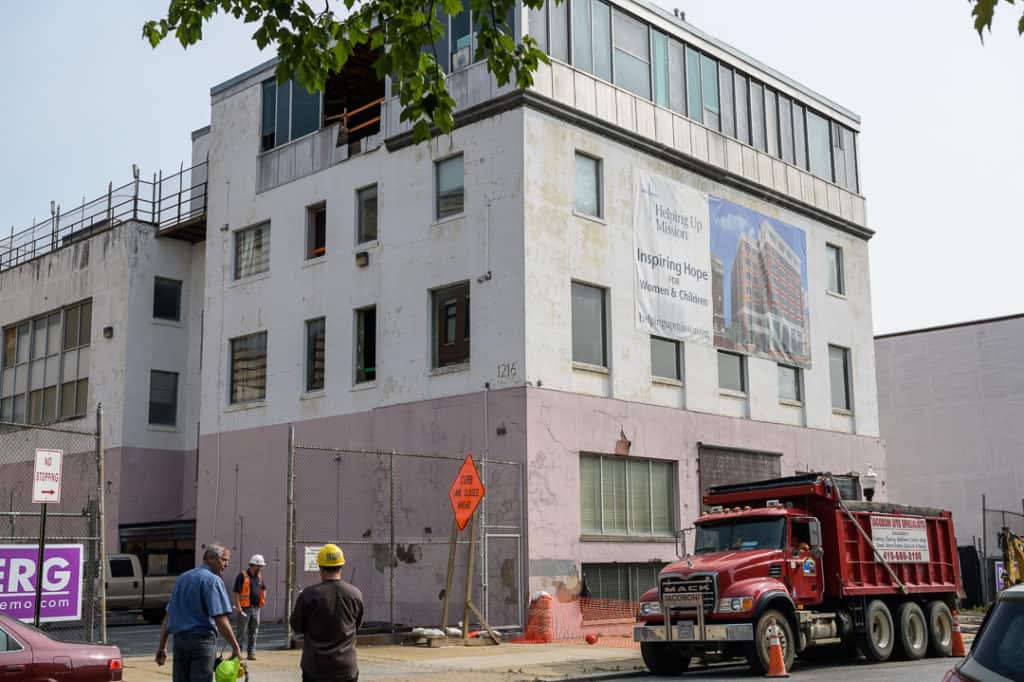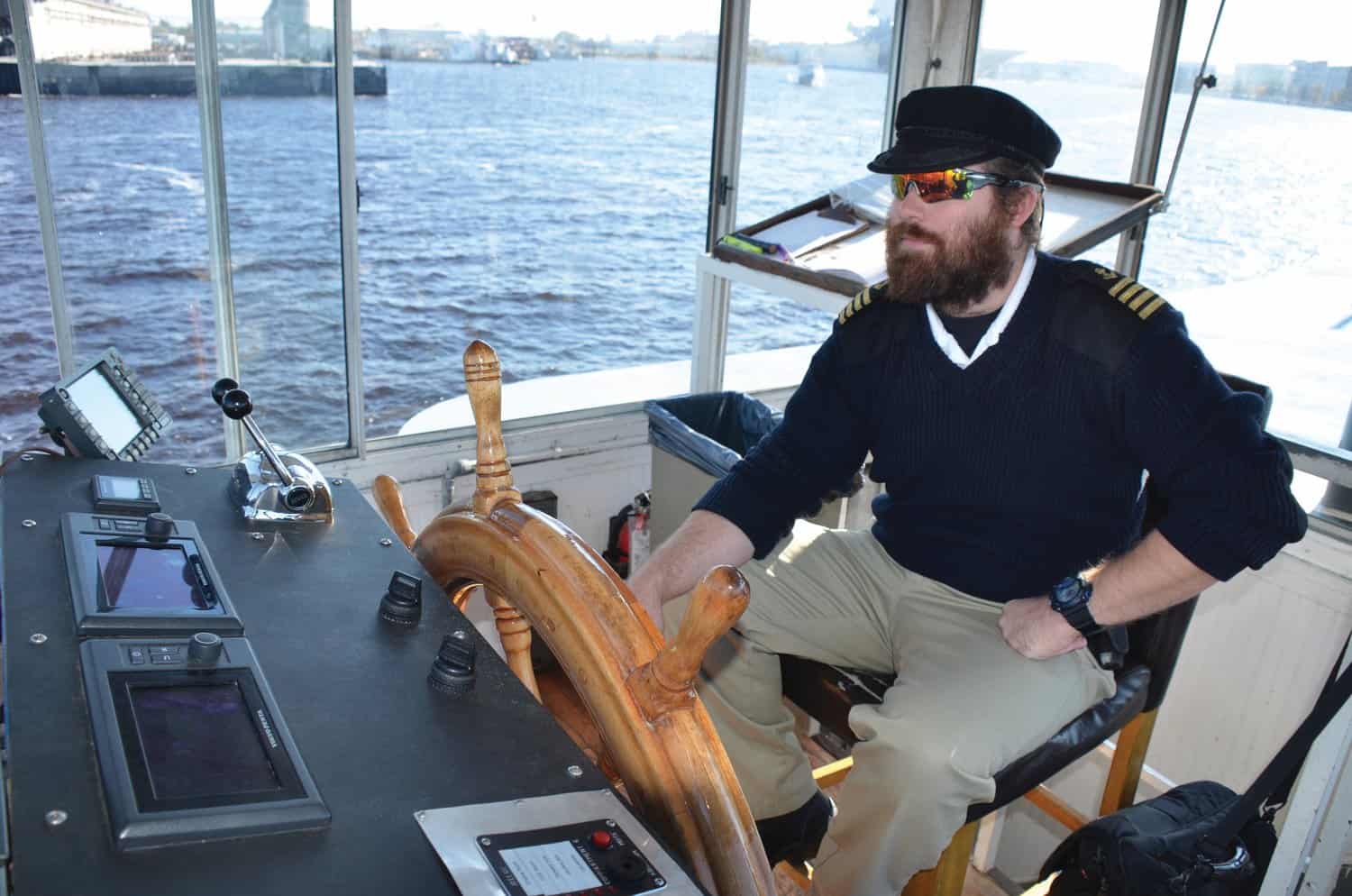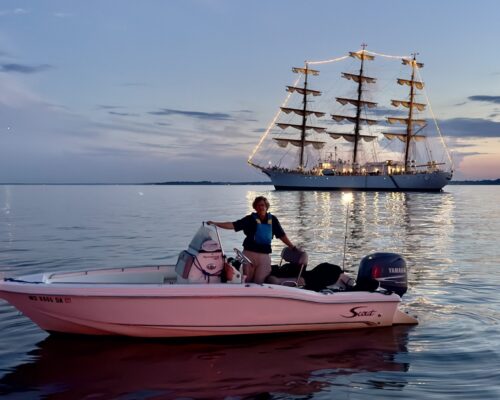Seafarers hall was a gathering place and a waiting room to adventure
As the Tall Ships sailed into the Port of Baltimore over the Bicentennial Summer of 1976, I waited to ship out of Crabtown at the Seafarers International Union hall just east of downtown.
I had graduated high school just a few weeks before; 18, eager to take a bite out of the world and completely unprepared for the work soon be expected of me in the deck department. The only knot I’d mastered was the one I used to tie my shoes.
But however ignorant of actual seafaring, I was long familiar with the large building where I waited for a job on a ship—1216 East Baltimore Street, just off the corner of Central Avenue and a block away from the Lloyd Street synagogue and Attman’s Delicatessen in Baltimore’s original Jewish neighborhood.
My father, a retired chief engineer now receiving a generous and well-earned pension, is a lifetime member of the SIU. As a boy in 1966, my family attended a large Christmas party at the hall during a protracted tugboat strike against the Baker-Whiteley and Curtis Bay towing companies.
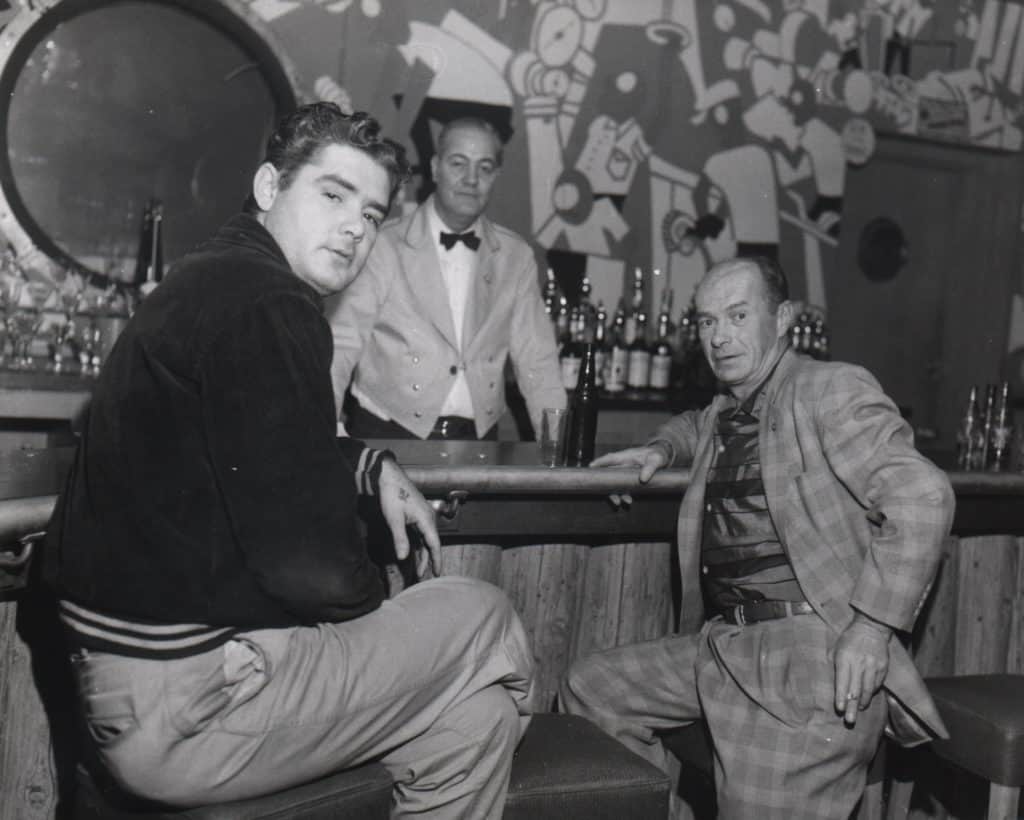
My brother and I were given G.I. Joes. In grade school, I was treated there by union physicians, one of whom diagnosed me with allergies. It was as close to a functioning American socialism as ever existed and the men were proud of it.
Later, on the notion that to be a writer you needed adventure, I sat in the large open hall reading Tolstoy (which I didn’t understand any more than I knew what it meant to “go aloft”) while waiting for an entry-level job to be posted on a large board that resembled a movie marquee. My chances were best on a vessel that more senior men—meaning everybody else—had no interest in.
The ship was the S.S. Mayaguez, built in Wilmington, N.C. for the federal maritime commission and launched as the S.S. White Falcon in 1944 less than two weeks before D-Day. By the time I trudged up the gangway (a satchel of notebooks and pencils and cassette tapes in my seabag), the freighter had been converted into a container ship, infamous for having been taken by the Khmer Rouge the year before in the last official battle of the Vietnam War.
I sailed on the Mayaguez for two consecutive summers; first in the deck department and in ’77, as a wiper down below. Soon after getting my discharge papers that second year, I landed a job dispatching trucks in the circulation department of the Baltimore Sun.
In June of 1978, the seafarers made the hall available to their union brethren in the Baltimore-Washington Newspaper Guild. There, in the same room where the port agent had called my name for work just a year before—I and my fellow newspaper colleagues voted to strike the Sunpapers, a disruption that lasted three days.
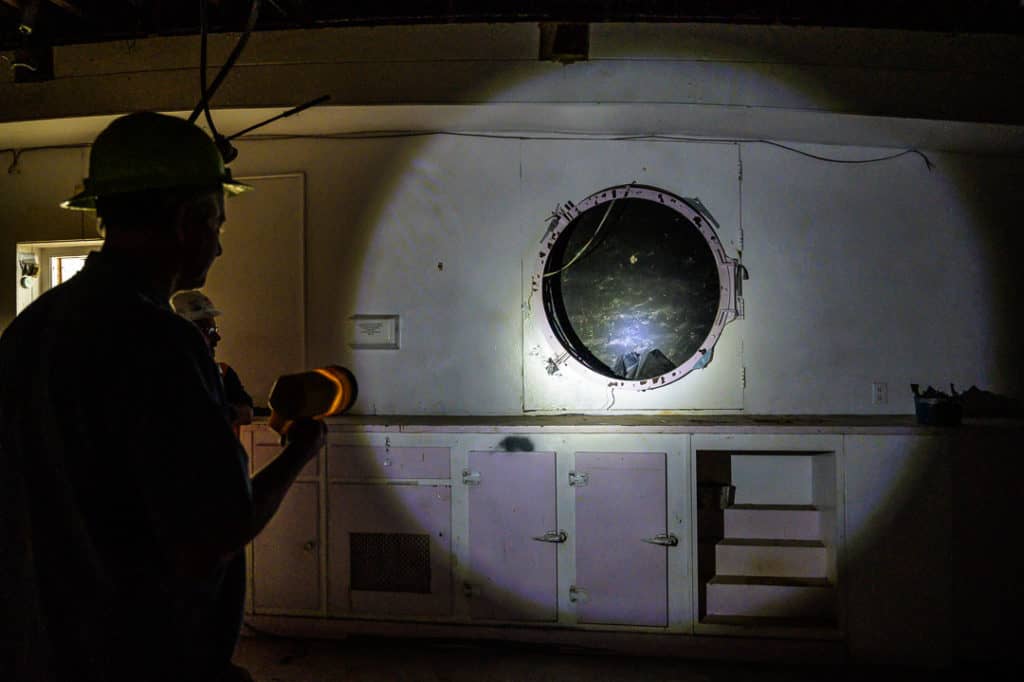
That was more than 40 years ago. Until the other day, I had not been back inside. The only thing recognizable to me from the past were brushed aluminum handrails and what was left of the star-and-diamond shaped terrazzo tiles. There were discs cut out of wooden passageway doors, but the portholes which once filled them had been yanked out, most likely in some laborer’s basement or garage.
The first building developed on the footprint known as 1216 East Baltimore Street—now part of the Jonestown Historic District, the earliest settlement of note in colonial Baltimore along with Fells Point—was the Second Unitarian Church, cornerstone 1860.
A quarter-century later, the Redemptorists religious order acquired the property for the city’s first incarnation of St. Wenceslaus Bohemian Catholic Church, which opened in 1886.
Next to occupy the building were two theater operators offering live entertainment—including Yiddish drama, vaudeville and boxing matches—for a predominantly Jewish audience, first known as Baltimore Theater and better known as the Princess Theater.
The big change came in 1912 when the building was sold to the Jewish Education Alliance and demolished to make way for the Michael S. Levy Memorial building, a wonder of recreation and edification with a rooftop playground, not unlike the one that once graced the roof of the City Recreation Pier on Thames Street.
Local architect Joseph Evans Sperry, perhaps best known for the Bromo Seltzer tower downtown—inspired in part by the Palazzo Vecchio in Florence—was commissioned by the JEA to design the Levy building, which was dedicated in 1913.
Had the building remained as Sperry envisioned it—brick with arched windows in an overall “Colonial Revival” spirit—it likely would have been protected by historic status and spared the wrecking ball that awaits it.
But after the Jewish community sold the building to the SIU in 1952, Sperry’s conception was radically altered by a massive—and much celebrated—makeover, according to a report by Baltimore City’s Commission for Historical and Architectural Preservation.
The Seafarers opened the hall to its members on November 10, 1954, a much ballyhooed event that garnered TV coverage.
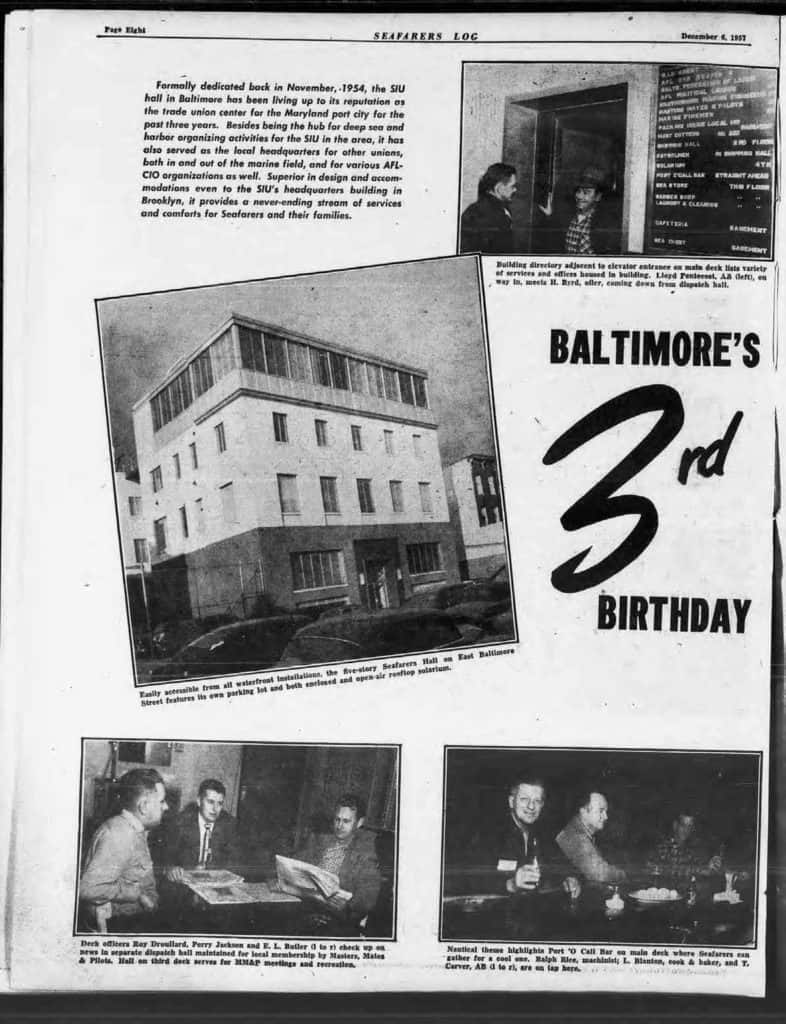
In addition to squaring off the arched windows with stainless steel, the building’s brick skin was covered by white stucco to mimic the SIU hall in New York; a “bump-back” addition was added on the east side, and, overall, said Walter W. Gallas, a city preservation planner, the post-war seafaring “showplace,” fell victim to “an unsuccessful effort at modernist design.”
Oh, but what a prosperous, Eisenhower-era palace it was to sailors shipping out of the Chesapeake Bay compared to the small union hall it replaced on above the Lorraine Tavern on Gay Street.
In 2000, claiming that the area had become too rough even for salty dogs, the SIU sold the building to the mdlogix healthcare and information technology firm. A number of tenants followed—including a Christian school, which left a New Testament passage from Hebrews in red paint on a wall. In 2016 the building was bought by the non-profit Helping Up Mission, which is headquartered across the street.
“We’re putting up a 150,000 square feet building to house 210 adult women and their children,” said Robert K. Gehman, chief executive officer of the Mission. “We weren’t buying the building, we were buying the future.”
The future is set to open in September of 2021. And by the time you read this, the past will be dust.

